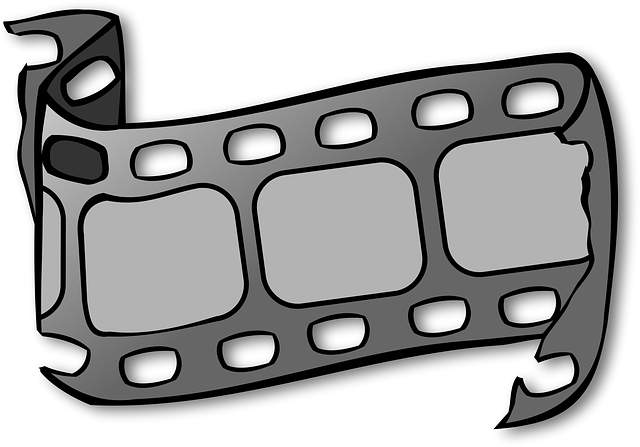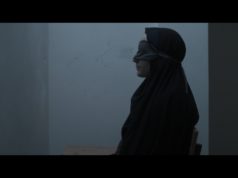Continuing the project that I started a few weeks ago, here are thoughts on more of the canonical films that eluded me until now. I’ll have to put this project on hold during the upcoming Lone Star Film Festival, but I should have at least one more post in this series before the year is out. Where, oh where, am I going to find a copy of Béla Tarr’s Sátántangó, and where am I going to find the seven hours needed to watch it? Wish me luck on my quest, movie fans.
L’Atalante
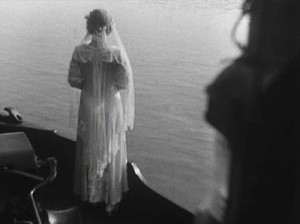
Year: 1934
Director: Jean Vigo
Writers: Jean Guinée, Albert Riéra, and Jean Vigo
Language: French
Sight & Sound Ranking: 12
Wow, okay. I’m not entirely sure what to make of this movie, and I think that I’d have a better idea if Vigo had lived to make more films. (He died of tuberculosis at age 29 right after making L’Atalante.) On the surface, this seems pretty straightforward: a girl from a remote village (Dita Parlo) marries a sailor with his own riverboat (Jean Pasté) because he promises to take her to see Paris. Yet life aboard the boat isn’t easy, and when he reneges on his promise, she takes off into the city, and he sets sail from his port in the Seine without her out of spite. Much of the movie is about the marriage between these two hasty young people, and yet Vigo filigrees this brief film with the vulgar musings of the goodhearted old sailor (Jules Simon) on the boat, as well as a surreal shot of the husband having a vision of his missing wife beckoning him underwater. Unlike a great many of the movies on Sight & Sound’s list, this one doesn’t wear its serious intentions on its sleeve, as the director infuses the story with silliness and a sense of fun. I don’t know if Vigo was a great filmmaker, but he was certainly a rare and possibly unique talent in cinema history, and it’s a shame that we don’t have more from him.
Bicycle Thieves (Ladri di Biciclette)
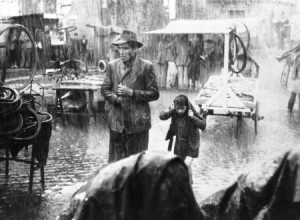
Year: 1948
Director: Vittorio de Sica
Writers: Cesare Zavattini, Suso Cecchi D’Amico, Vittorio de Sica, Oreste Biancoli, Adolfo Franci, and Gerardo Guarrieri, based on Luigi Bartolini’s novel
Language: Italian
Sight & Sound Ranking: 33
Yes, this movie has historical value as a benchmark in the Italian neorealist movement, but you don’t need to know about any of that to appreciate this drama. Without any ceremony, De Sica immediately plunges you into the plight of a laborer named Antonio (Lamberto Maggiorani) whose livelihood and ability to support his family rests precariously on owning a bicycle. When the bike is stolen on the day he starts a new job putting up movie posters around Rome, you can feel his desperation as he tries to track down the vehicle or acquire another one. Antonio’s young son Bruno tags along on his father’s search for his bicycle, and the kid’s presence should be an unbearably sentimental touch, and yet it becomes a powerful element as the boy witnesses his father put through agony. A lesser filmmaker would have turned this story into hectoring social commentary, but De Sica limits it to piquant notes, like Bruno observing a rich boy his age stuffing himself at a pizza parlor. This film has been profoundly influential, and you can find its DNA as far afield as China (Beijing Bicycle) and California (A Better Life). There aren’t many films, though, that have the sweaty, despairing tension of this movie.
Children of Paradise (Les Enfants du Paradis)
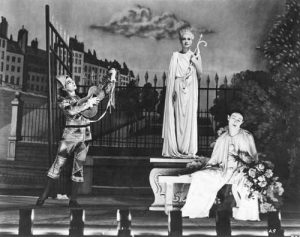
Year: 1945
Director: Marcel Carné
Writer: Jacques Prévert
Language: French
Sight & Sound Ranking: 73 (tie)
Life’s a show, says this movie. The characters in this French classic are largely actors and performers, and the way this film shows them approaching their own lives as if they were actors playing a role is startlingly modern for such a movie made in 1945. Carné took two years to make this massive historical epic and couldn’t avoid cutting deals with France’s Nazi occupiers to get it done. Set in the 1820s, it’s about a femme fatale (Arletty) who passes through this world fleetingly but becomes the object of obsession for a gifted, misguided mime (Jean-Louis Barrault), an egocentric stage actor (Pierre Brasseur), a slimy, foppish crook (Marcel Herrand), and a wealthy count (Louis Salou). The characters, based on real-life historical personalities, are drawn in novelistic depth, and the performances staged by these show business folk for their paying customers provide the spectacle. (The title refers to the fans in the cheapest seats, high above the stage.) Particularly fine is Barrault, the star of the Comédie Française whose precise mime showcases the training of that legendary troupe. The movie bubbles with wit and energy, and its dialogue is acclaimed, though my French is too limited to judge this properly. Carné never achieved this sort of excellence again; his collaborators scattered after World War II ended. The French regard this film as their Gone With the Wind, and supposedly it plays somewhere in Paris every day. You can see why.
The Earrings of Madame de…
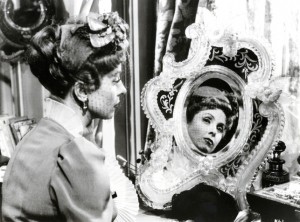
Year: 1954
Director: Max Ophüls
Writers: Marcel Achard, Max Ophüls, and Annette Wademant, based on Louise de Vilmorin’s novel
Language: French
Sight & Sound Ranking: 93 (tie)
The original French title was simply Madame de…. The earrings were added for the American release, and this is one time when the American title is actually an improvement. The earrings are a key part of this lavish costume drama about a flighty and rather stupid 19th-century noblewoman (Danielle Darrieux) who falls in love with a dashing Italian diplomat (Vittorio De Sica, the same guy who directed Bicycle Thieves) and incurs the gentlemanly wrath of her husband (Charles Boyer). Beneath all the sumptuous décor, this is a movie where everything is quivering with unfulfilled desire, and you sense that there would be no story any more if the two lovers could just have a night of ecstatic, mind-blowing sex and get it all out of their system. I must confess that there are other movies in this vein that I find better: David Lean’s Brief Encounter, Todd Haynes’ Far From Heaven, Martin Scorsese’s The Age of Innocence. (That last one is particularly influenced by Madame de….) Yet it’s worth seeing purely for the masterful camera placement and movement that Ophüls brings to this period piece. No wonder the Criterion DVD boasts an intro by Paul Thomas Anderson, a filmmaker who knows from a good tracking shot himself.
Jeanne Dielman, 23 Quai du Commerce, 1080 Bruxelles
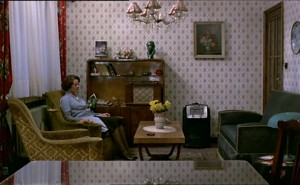
Year: 1975
Writer/director: Chantal Akerman
Language: French
Sight & Sound Ranking: 35 (tie)
I found myself doing housework while I watched this movie. If you’re familiar with this Belgian feminist classic, you just laughed at that last sentence. That’s because the titular Jeanne (the rest of the title refers to her postal address in Brussels) spends so much of the movie doing housework. I must confess that 10 minutes into this, during which I watched this middle-aged housewife (played by Delphine Seyrig) fold linen, make casserole, and wash dishes, I was thinking, “Okay! Okay! This woman’s life is domestic drudgery! I don’t need three freakin’ hours of this to get that!” Even the revelation that Jeanne is working as a prostitute out of her house doesn’t add much to the excitement level here. But then I started to fall into Akerman’s peculiar rhythms. Just the framing of a shot of Jeanne sitting in her chair and holding her head at an overly upright angle was enough to give me a portent of doom. About an hour in, I started to think, “This woman is going to throw herself off a bridge at the end of this.” Instead, she does something equally self-destructive. You can mock the Sight & Sound list for being stodgy, but the inclusion of this long, challenging, largely plotless film (and Sergei Paradjanov’s bizarre, dialogue-free The Color of Pomegranates) is pretty amazing.
Late Spring (Banshun)
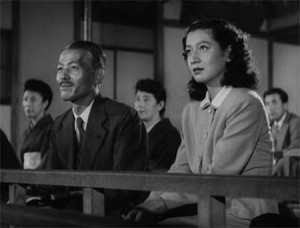
Year: 1949
Director: Yasujirô Ozu
Writers: Yasujirô Ozu and Kôgo Noda, based on Kazuo Hirotsu’s novel
Language: Japanese
Sight & Sound Ranking: 15
Well, you know what you’re getting with Ozu: meticulously composed visuals, cameras placed directly in front of the actors, small but telling observations about the dynamics of middle-class Japanese families. So it is with this drama about a widowed professor (Chishû Ryû) who wants to see his 27-year-old daughter (Setsuko Hara) married off. Behind the Jane Austen-like ponderings of what makes a good marriage, there’s tension between the old traditions and the new, more liberalizing ways brought in by the Americans, who were occupying Japan at this point. In between all that is our professor, who eventually finds a way to let his daughter make her own choices while staying true to the Japanese marriage methods. Just like him, Japan will find a way to keep its customs while staying in step with a changing world. It’s all very subtle, and I must confess that I tend to respond more to the weird and wacky Kaneto Shindô-Seijun Suzuki-Hiroshi Teshigahara wave that swept in during the 1960s, defying the classicism of Ozu, Mizoguchi, and even Kurosawa. Yet Ozu’s films are impeccable pieces of work, gently moving documents that pulsate with humanity the way few other filmmakers before him or since.
Lawrence of Arabia
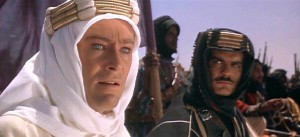
Year: 1962
Director: David Lean
Writers: Robert Bolt and Michael Wilson
Language: English
Sight & Sound Ranking: 81 (tie)
I have a perfectly good reason for missing this one; my mother was a voracious reader of T.E. Lawrence’s writings and biographies of him when I was growing up, so that by the time I was of an age to watch movies seriously, I was all Lawrenced out and in no mood to watch a three-hour biopic of him. It turns out that the movie is more than just vast desert landscapes and battle scenes and Peter O’Toole shouting “No prisoners!” It’s a complex examination of war heroism, the media, realpolitik, and a hero whose courage often shades into megalomania. O’Toole is, of course, magnificent as a conflicted man marginalized by his own bureaucracy who finds his niche as a rallying point for the battling factions of the people of the Arabian peninsula. Then that heroism becomes complicated as the Arabs start the messy process of organizing a government. Throwing bombs at an oppressive regime is easy, picking up the trash once you’ve taken charge is hard. The Arab section of the movie ends with Anthony Quinn’s bandit shouting after Omar Sharif’s pan-Arab nationalist: “You will find being an Arab thornier than you think!” Prophetic.
Pickpocket
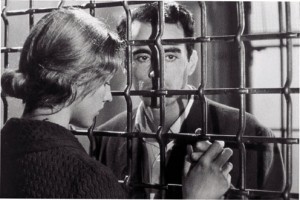
Year: 1959
Writer-director: Robert Bresson
Language: French
Sight & Sound Ranking: 63 (tie)
My first exposure to Bresson is this film, though it won’t be my last if I see this project to the end, because Sight & Sound’s list is Bresson-heavy. (Though Au hasard, Balthasar and A Man Escaped seem harder to find on DVD. This might take some digging.) Bresson famously said that he wanted “no beautiful shots, only useful shots.” Since I’m rather a fan of useless beauty in cinema, this might be a rocky match. This brief 75-minute story about a small-time criminal with an existential crisis engaged me fitfully. Martin LaSalle portrays the pickpocket in the title, a Parisian who filches people’s purses and wallets out of needs that go deeper than a need for money. The comparison everybody makes is Dostoyevsky’s Crime and Punishment, but there’s also notes of Camus’ The Stranger, published 17 years before Pickpocket was filmed. There are some great bits, like the balletic scene with a team of pickpockets working a crowd on a train. Yet I found the story of religious faith and redemption difficult to get into, and Bresson’s famous austerity seemed dry to me. Perhaps I chose the wrong movie to start my Bresson on. Certainly the other two that I mentioned sound interesting. This will be continued.
Playtime
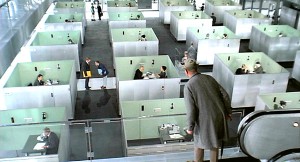
Year: 1968
Director: Jacques Tati
Writers: Jacques Tati and Art Buchwald
Languages: English and French
Sight & Sound Ranking: 42 (tie)
A comedy for monks. By this point in Tati’s career, he had turned into an ascetic, and this film, which featured all his previous tendencies writ large, was a giant financial flop. (No surprise that, given how French audiences were enthralled with the energy of the New Wave by this time.) The story is about a gaggle of American tourists who invade an antiseptic, mechanized version of Paris. Tati portrays M. Hulot as usual, but the character is frequently relegated to the corner of the frame as gags (like a chair made of a fabric that retains the indentation of a person’s ass for a second after they get up, before springing back into shape) play themselves out in long shot, with no stars to direct our attention. You won’t be surprised to find out that Tati was a big fan of Kubrick, with this movie’s enormous interior spaces, sparse décor, and lack of interest in human nature. I tend to find that latter quality unattractive in a filmmaker, and Tati’s disenchantment with technology and the modern world always rubbed me the wrong way. If he was so nonplussed about the world as it was, why didn’t he set his movies at some point in the past when he thought things were better? I’ll admit that the last sequence, with its shots of construction sites around Paris that seem to be moving in time with the joyous music, is pretty magical. I didn’t laugh much at this comedy, though. I don’t think comedy works when it’s this denuded of personality. At least I know that somebody tried.



